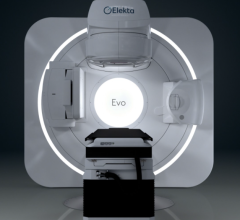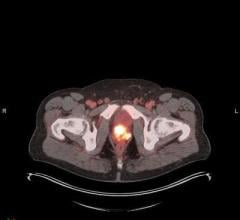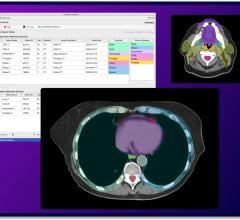
October 21, 2015 — A collaborative, patient reported outcome (PRO)-based approach by palliative care and radiation oncology teams results in better outpatient symptom management and a decrease in end-of-life hospitalizations and costs for late-stage cancer patients, according to new research. Findings from the study were presented at the American Society for Radiation Oncology’s (ASTRO’s) 57th annual meeting. The data also showed that through the implementation of rapid palliative radiotherapy — which includes shorter, higher doses of radiation therapy — many patients experience pain relief within one week of treatment.
Starting in 2012, researchers at the University of Virginia Health System developed an integrated patient care program for advanced cancer patients that utilized information from PROs to improve patients’ health and quality of life and reduce costs of care. The program emphasized reducing hospitalizations and improving outpatient management of patients. The collection of PRO assessments was initiated for all patients beginning in October 2013, following a pilot testing phase completed in February 2013.
A patient questionnaire that asked patients how they were doing emotionally and physically was incorporated into the facility’s electronic medical records system. A comprehensive assessment and rapid evaluation and treatment (CARE Track) palliative care team was alerted by the system to clinically significant reported changes in a patient’s status.
A total of 646 cancer patients were enrolled into the CARE Track program. End-of-life data of 368 CARE Track patients was compared to end-of-life data of 198 patients not enrolled in the CARE Track program (the control group). A total of 967 PRO surveys were completed by the 368 CARE Track patients. The CARE Track patients had significantly fewer end-of-life hospitalizations, with 48.3 percent of patients being hospitalized in the final 90 days of life, compared to 64 percent from the control group. Additionally, the CARE Track patients received more hospice care than the control group (69.6 percent compared to 47 percent), which resulted in fewer hospital deaths for the CARE Track group than the control group (8.4 percent vs. 38.5 percent). This difference in end of life care resulted in a reduced mean total cost of $7,317 per patient in the last 90 days of life.
A multidisciplinary Supportive Care Tumor Board was also developed that met weekly to develop rapid and coordinated care plans for highly symptomatic patients. To respond more quickly to pain control, the team developed STAT RAD—a more rapid workflow for palliative radiation therapy for patients with bone metastases. The goal of the program was turning a common two-to-three week treatment course into a one-day treatment procedure with highly focused radiation treatment to reduce treatment-related toxicity.
The STAT RAD pilot clinical trial enrolled 28 patients. The patients each had between one and three painful bone metastases (37 target lesions) and received RT of 5 to 10 Gy per fraction, for between two and five fractions. An average of 21.6 Gy in 3.1 fractions was administered. The pain response of patients in the STAT RAD program was assessed using the International Bone Metastasis Consensus Working Party; and the patients’ quality of life (QOL) was assessed using the Functional Assessment of Cancer Therapy - Bone Pain Scale. Patients reported 80 to 90 percent partial or complete pain relief by three months and QOL was significantly improved for patients for a timeframe ranging from one week post-STAT RT to 26 weeks post-STAT RAD.
A second clinical trial is still accruing patients and is exploring single-fraction STAT RAD with dose escalation from 8 Gy to 15 Gy so that the entire course of simulation, planning, quality assurance and treatment can be completed in a single 3-4 hour patient centric-procedure.
“If we listen to our patients carefully, talk to them about their changing medical and emotional needs and develop rapid and coordinated treatment plans we can improve their quality of life and reduce their need for hospitalization for symptom management at the end of life,” said Paul W. Read, M.D., Ph.D., lead author of the study and professor of radiation oncology at the University of Virginia Health System. “Integrating patient surveys to collect patient reported outcomes directly into electronic medical records, and incorporating them into routine clinical care can be done in most hospital systems. The concept of tumor boards for multi-specialty care planning of curative cancer patients is practiced throughout the country and extending this concept to palliative care management is easy and straightforward. Single-fraction radiation therapy for palliation of bone metastases for advanced cancer patients with short life expectancies is an accepted national care guideline and has been studied for decades in clinical trials. Therefore, these programs can all be adopted into clinical practice at most health systems with minimal cost, training or education.”
For more information: www.astro.org


 May 16, 2024
May 16, 2024 








